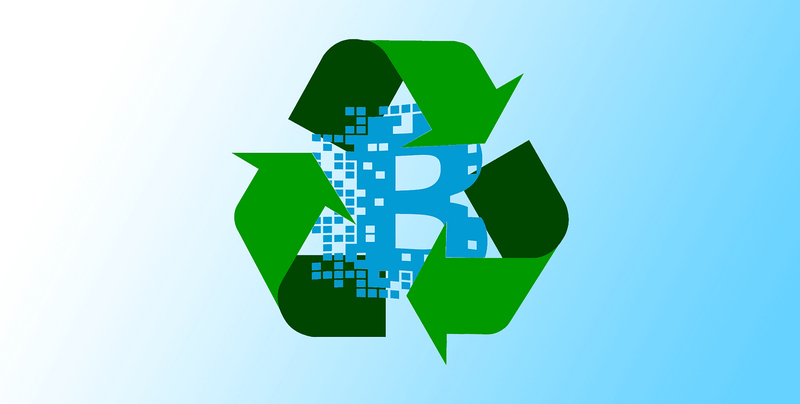Regenerative Finance (ReFi) Explained – A Beginner’s Guide

Regenerative Finance (ReFi) is at the forefront of a groundbreaking financial paradigm that has emerged recently. It offers a novel approach focusing on financial returns and positive social and environmental impact. This article explores the essence of Regenerative Finance, its historical evolution, working mechanisms, and purpose in fostering sustainable growth. Furthermore, we examine its advantages, disadvantages, and real-world examples.
The ReFi Summary
No time for the whole thing? Read the short guide instead:
- Regenerative Finance (ReFi) emphasizes financial returns alongside positive social and environmental impact.
- Web3 represents a decentralized internet paradigm, ensuring user control over data and interactions.
- Both ReFi and Web3 prioritize decentralization and sustainability, aligning in values and goals.
- ReFi aligns investments with regenerative principles, supporting sustainable projects and creating symbiotic relationships with investors.
- investments span renewable energy, sustainable agriculture, and community development, fostering a regenerative economy.
What Is Regenerative Finance (ReFi)?
Regenerative Finance, at its core, is a financial philosophy focused on investments that not only generate profits but also contribute positively to social, environmental, and economic systems. It emphasizes the regeneration of communities and ecosystems, aiming to create a resilient and sustainable world.
Therefore, ReFi investments often support projects related to renewable energy, sustainable agriculture, conservation, and community development. The ultimate goal of ReFi is to nurture a regenerative economy that thrives on principles of abundance, equity, and environmental stewardship.
Web3 and Synergy with ReFi
Web3, on the other hand, is a paradigm shift in the digital realm. It envisions a decentralized internet where users share power rather than having centralized authorities.
Built on blockchain technology, Web3 fosters a peer-to-peer network of interconnected applications, services, and platforms. As a result, this decentralized nature ensures greater privacy, security, and user control over data and digital assets.
Web3 is about more than just the internet. It’s also about reshaping how we interact, transact, and collaborate online, fostering a new era of digital democracy.
The synergy between ReFi and Web3 is evident in their shared values and goals. Both movements prioritize decentralization, sustainability, and community empowerment.
In finance, Web3 technologies facilitate transparent and secure transactions, making it easier to implement ReFi principles. Smart contracts, a hallmark of blockchain technology, enable the creation of decentralized finance (DeFi) platforms, allowing for the seamless execution of ReFi investment strategies.
Moreover, blockchain transactions’ transparent and auditable nature aligns perfectly with ReFi’s emphasis on accountability and positive impact measurement.
How Does Regenerative Finance (ReFi) Work?
Regenerative Finance operates by aligning investment strategies with regenerative principles. Investors identify projects or businesses that demonstrate a commitment to sustainability and social impact. Hence, these investments often involve clean energy, organic farming, conservation initiatives, and community development programs.
ReFi investors actively engage with the projects they fund, offering financial support, expertise, and mentorship. Thus, it creates a symbiotic relationship between investors and initiatives.
Purpose and Examples
ReFi emerged as a response to the shortcomings of traditional finance, aiming to address environmental degradation and social injustices. Its purpose is to create a regenerative economy where investments contribute to the restoration and well-being of communities and ecosystems, fostering a sustainable future for future generations.
Initiatives like the Climate Collective actively promote blockchain-based solutions to combat climate change. These projects raise awareness and assist companies in investing in carbon credits. Moreover, they encourage regenerative land-use practices and facilitate the organization of climate-saving endeavors.
By leveraging blockchain technology, these initiatives create transparent platforms where companies can invest in eco-friendly practices and promote initiatives that fight climate change.
Another significant facet of regenerative finance lies in preserving cultural heritage. Traditional methods of recording history or cataloging artifacts often face the challenge of alteration or deterioration over time. Enter blockchain technology and Non-Fungible Tokens (NFTs).
NFTs provide an innovative solution by creating verifiable and immutable records on the blockchain for cultural artifacts. Therefore, historical items can be securely documented, ensuring their permanent place in history. Companies like Monuverse have embraced this approach, minting NFTs of Italian heritage items.
Pros
- Sustainability: ReFi investments promote sustainable practices and contribute to the regeneration of ecosystems.
- Positive impact: Regenerative Finance generates positive social impact by supporting local communities and fostering social equality.
- Resilience: These initiatives create resilient systems capable of withstanding environmental and economic challenges.
- Long-term vision: ReFi encourages long-term thinking, prioritizing projects with lasting benefits for society and the environment.
Cons
- Risk factors: ReFi investments, like any other, come with risks, and not all projects may succeed.
- Initial costs: Some ReFi projects might require significant initial investments, posing financial challenges for potential investors.
- Potential scams: There’s always a risk that ReFi projects can turn out to be fraudulent, as with any other Web3-based crypto assets.
Regenerative Finance (ReFi) Use Cases
Here are some compelling ReFi use cases that showcase its transformative power:
- Renewable energy projects: Investments in solar, wind, and hydroelectric projects that generate clean energy while reducing carbon emissions.
- Sustainable agriculture: Funding organic farming practices, permaculture, and agroforestry initiatives that promote biodiversity and soil health.
- Community development: Supporting local initiatives such as affordable housing, education, and healthcare projects that empower communities and improve quality of life.
Frequently Asked Questions
Get more information about Regenerative Finance (ReFi).
Can individuals participate in Regenerative Finance?
Individuals can engage in ReFi through impact investment platforms, community funds, or socially responsible investment portfolios.
What are the criteria for selecting ReFi projects?
ReFi projects are typically chosen based on their potential for positive environmental, social, and economic impact, aligning with regenerative principles.
Are ReFi investments profitable?
ReFi investments can yield financial returns, but the primary focus is creating a positive impact. Returns may vary based on the project and market conditions.
How can businesses or organizations get involved in Regenerative Finance initiatives?
Businesses and organizations interested in Regenerative Finance can participate by aligning their investments with sustainable and socially responsible projects. They can collaborate with impact investment platforms, partner with environmental and social organizations, or establish their own regenerative initiatives.
Are tax incentives or benefits associated with investing in ReFi projects?
Individuals and businesses investing in Regenerative Finance projects receive tax incentives or benefits in some regions. These incentives aim to encourage investments in sustainable initiatives and may include tax deductions, credits, or exemptions.
Regenerative Finance (ReFi) Definition – Final Words
Regenerative Finance (ReFi) represents a transformative approach to finance, transcending profit-making boundaries to nurture a sustainable future. Embracing the ReFI principles paves the way for a harmonious coexistence between humanity and the planet. As a result, it fosters a regenerative economy that thrives on shared prosperity and environmental vitality.
Please note that cryptocurrency investments carry inherent risks. Therefore, it’s essential to conduct thorough research and seek professional advice before engaging in any financial transactions.





